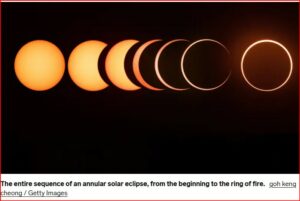Solar eclipses are relatively rare events, occurring approximately two to five times per year, according to the Natural History Museum.
Total solar eclipses, where the moon fully covers the sun, are even rarer, happening roughly every 18 months. Typically, these celestial events take place over the ocean or unpopulated areas, making it a unique occurrence to have an eclipse visible to a wider audience.
In the case of the United States, after October 14, 2023, it will be in April 2024 until we experience another solar eclipse. This eclipse will be total and will traverse the eastern US, from Texas to Maine. Afterward, the contiguous US will not witness another total solar eclipse until 2044, or an annular eclipse until 2046, making this October’s event a remarkable opportunity for sky enthusiasts.

Where to Witness the Eclipse
The path of totality, also known as the moon’s shadow or umbra, is the prime location to witness the annular eclipse and the captivating ring of fire.
This narrow path will stretch across the western US, from the Oregon coast to Corpus Christi, Texas, and is expected to pass near approximately 68 million people, offering them a front-row seat to the sky event. Even outside the path of totality, the entire contiguous US will experience a partial solar eclipse, although the extent of coverage may vary.


